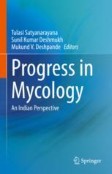Search
Search Results
-
Fungal Aerobiology and Allergies in India: An Overview
Today more than 30% of the world population is known to suffer from one or the other allergic ailments such as bronchial asthma, allergic rhinitis,...
-
Invasive Alien Plant Pathogens: The Need of New Detection Methods
Invasive alien species are a major threat to natural and anthropogenic ecosystems and to the economy. Many invasive fungal species have severely...
-
Monitoring airborne inoculum for improved plant disease management. A review
Global demand for pesticide-free food products is increasing rapidly. Crops of all types are, however, under constant threat from various plant...

-
Seasonality and intensity of airborne Boletus-type spores in relation to land use and weather pattern
Forests are a natural source of airborne bolete spores. The timing of sporulation and its intensity as well as the dispersal of airborne spores and...

-
Strategies for managing fungicide resistance in the Brazilian tropical agroecosystem: Safeguarding food safety, health, and the environmental quality
Fungicide resistance is an alarming challenge for the Brazilian tropical agricultural systems, with major implications for food safety, human and...

-
Aerobiology, epidemiology and management strategies in apple scab: science and its applications
Apple Scab, caused by Venturia inaequalis (Cke.) Wint. (anamorph Spilocea pomi Fr.), is considered to be one of the most important fungal diseases of...

-
Modelling black Sigatoka epidemics with seasonal dispersal of Mycosphaerella fijiensis ascospores over a banana plantation in the Ribeira Valley, São Paulo, Brazil
Knowing the patterns of Black Sigatoka development is essential to propose adequate disease management practices and evaluate their effects, which...

-
Detection of Airborne Inoculum of Hymenoscyphus fraxineus: The Causal Agent of Ash Dieback
The inoculum of H. fraxineus consists mainly of ascospores released from apothecia which are growing on fallen leaves infected during the previous...
-
Introduction
Since man-made buildings exist on earth, specialized microorganisms have found habitats on them, develo** in different ways from positively...
-
Wildland fire smoke alters the composition, diversity, and potential atmospheric function of microbial life in the aerobiome
The atmosphere contains a diverse reservoir of microbes but the sources and factors contributing to microbial aerosol variability are not well...

-
Hot Desert Microbiology: Perspectives in a Warming World
Deserts are the most dominant terrestrial environments as they cover over a third of the Earth’s emerged surface. These arid ecosystems further...
-
Bioaerosol and Its Impact on Human Health
Bioaerosols, a type of airborne pollutant, are biological components such as dead or animate bacteria and fungi, viruses, pollens and allergens along...
-
Different phenological behaviour of native and exotic grasses extends the period of pollen exposure with clinical implications in the Madrid Region, Spain
Exotic allergenic species constitute an important element of global change and are an emergent health issue in Europe due to their potential...

-
Historical Developments in Indian Mycology
Mycological developments in India, like other colonial states, had great influence from British mycologists. A great deal of contribution has come...
-
Selection of Phakopsora pachyrhizi-resistant isolates by fungicide applications in the field within the same season
The management of Asian soybean rust (ASR) involves a combination of cultural and chemical strategies. Phakopsora pachyrhizi- resistant isolates to...

-
Resistance Profile, Terbinafine Resistance Screening and MALDI-TOF MS Identification of the Emerging Pathogen Trichophyton indotineae
The emerging pathogen Trichophyton indotineae , often resistant to terbinafine (TRB), is known to cause severe dermatophytoses such as tinea corporis ...

-
Speleomycology of Air in Stopića Cave (Serbia)
Fungi can colonize organic matter present in subterranean sites and have a significant role as dwellers in different microniches of cave habitats. In...

-
A low cost method for early detection of airborne Puccinia rust spores using glass slides and foldscope in the sugarcane field
The rust pathogens ( Puccinia spp.) affect many cereals, pulses and sugar crops causing a major threat to crop production and productivity throughout...

-
The Concept of Evanescent Microbial Ecosystems in Earth’s Atmosphere
This essay presents the hypothesis that short-lived or evanescent microbial ecosystems exist in Earth’s lower troposphere (~ < 4 km). This hypothesis...
-
Climate Change and Allergies
Climate change affects human health and has a potential role in allergy exacerbations. However, it is difficult to measure the direct impact of...
